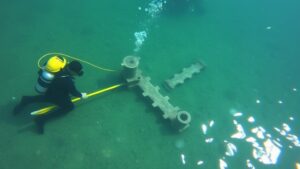Finding Valuable Coins in Fields Near Old Churches and Cemeteries
Finding Valuable Coins in Fields Near Old Churches and Cemeteries
The search for valuable coins in fields adjacent to old churches and cemeteries is a practice steeped in history and adventure. These locations are often rich with artifacts, especially coins, due to their historical significance and the activities that have taken place around them over the centuries. In this article, we will explore the reasons why these areas are treasure troves for coin enthusiasts, methods for locating valuable coins, and the legal and ethical considerations involved in treasure hunting.
Historical Context: Why Churches and Cemeteries?
Churches and cemeteries are often some of the oldest structures in a community, making them prime locations for historical artifacts. Many towns were founded around these religious institutions, resulting in gatherings and community events that often left behind a wealth of items, including coins. For example, during festivals, church fundraisers, and community gatherings, it was common for people to lose money or for coins to be dropped in the excitement, creating a historical layer of treasure.
According to a report from the Historical Society, some of the oldest coins found near churches date back to the 17th century, showcasing how these areas can serve as hotspots for rare finds. Assessing the historical significance of a site dramatically enhances a treasure hunters chances of success.
Scientific Approaches to Coin Hunting
Finding valuable coins requires a combination of skills and tools. Here are some scientific methods and approaches that can be employed:
- Geographical Surveys: Understanding the layout and historical land use of the area can direct your efforts more efficiently. Maps and records from local historical societies can provide vital clues on where activities took place.
- Metal Detectors: Using advanced metal detectors specifically designed for detecting valuable metals can significantly increase the chances of finding coins. Devices that discriminate between different types of metal can help focus your search.
- Soil Testing: Soil testing can reveal areas with higher conductivity, which might indicate the presence of buried metals, including coins.
In a case study from a dig near an 18th-century church in New England, a team employing these methods discovered over 300 coins, some dating back to the early colonial period. This highlighted the effectiveness of blending historical research with modern technology.
Legal and Ethical Considerations
Treasure hunting, particularly near historic sites like churches and cemeteries, is governed by laws that vary widely by jurisdiction. Here are some key considerations:
- Ownership Laws: Many regions have laws stating that any coins found on a property belong to the property owner. It is crucial to obtain permission before searching on private land.
- Cultural Heritage Protection: Some coins and artifacts may fall under laws protecting cultural heritage. Hunting in archaeological sites without proper permits can lead to severe legal consequences.
- Respect for the Deceased: When searching near cemeteries, it’s vital to approach with respect. Disturbing graves or treating the area as merely a hunting ground can result in ethical violations and community backlash.
Techniques for Effective Coin Hunting
When you are ready to hunt, consider employing the following effective techniques:
- Survey the Terrain: Start with a visual survey of the land. Look for signs of previous gatherings, like worn paths, or areas where people might have congregated.
- Search Grassy Areas: Coins tend to accumulate in areas where people frequently gather, including the grassy areas around churches and cemeteries.
- Use a Systematic Approach: Divide the area into sections and search methodically to ensure you cover all ground effectively.
For example, a detectorist in Ohio employed a grid system while searching near a historic churchyard and found multiple silver coins, demonstrating how an organized method can lead to success.
Conclusion and Actionable Takeaways
Finding valuable coins in fields near old churches and cemeteries can be an exhilarating endeavor, filled with both history and potential treasure. By understanding the historical context, employing scientific methods, considering ethical implications, and using effective searching techniques, individuals can enhance their chances of discovering hidden gems.
- Research local history and obtain necessary permissions before hunting.
- Invest in a high-quality metal detector and use systematic searching methods.
- Always act respectfully towards historical sites and the deceased, keeping legal implications in mind.
This blend of excitement and respect can transform a simple day outdoors into a meaningful encounter with the past, revealing the stories hidden beneath our feet.


